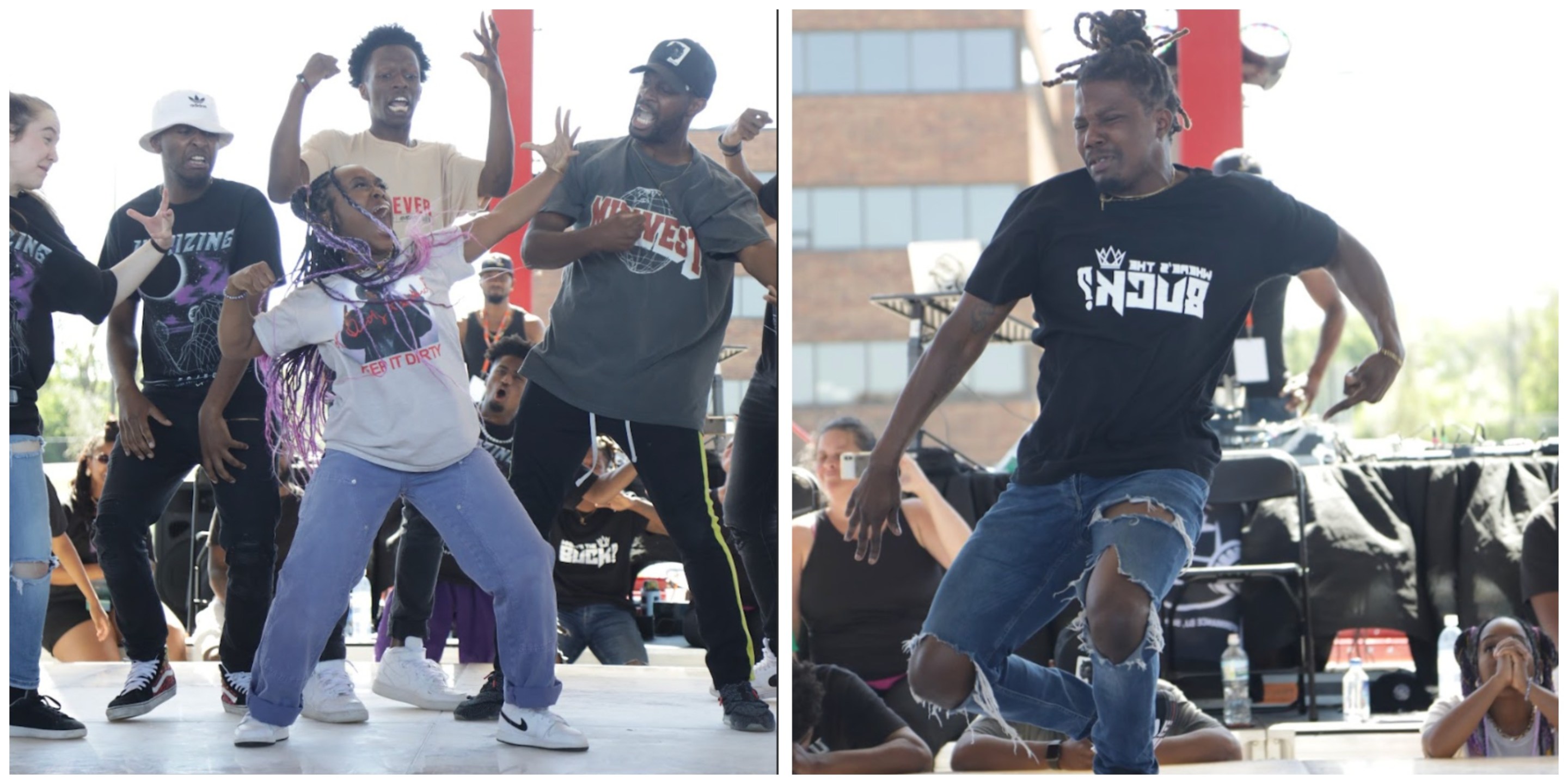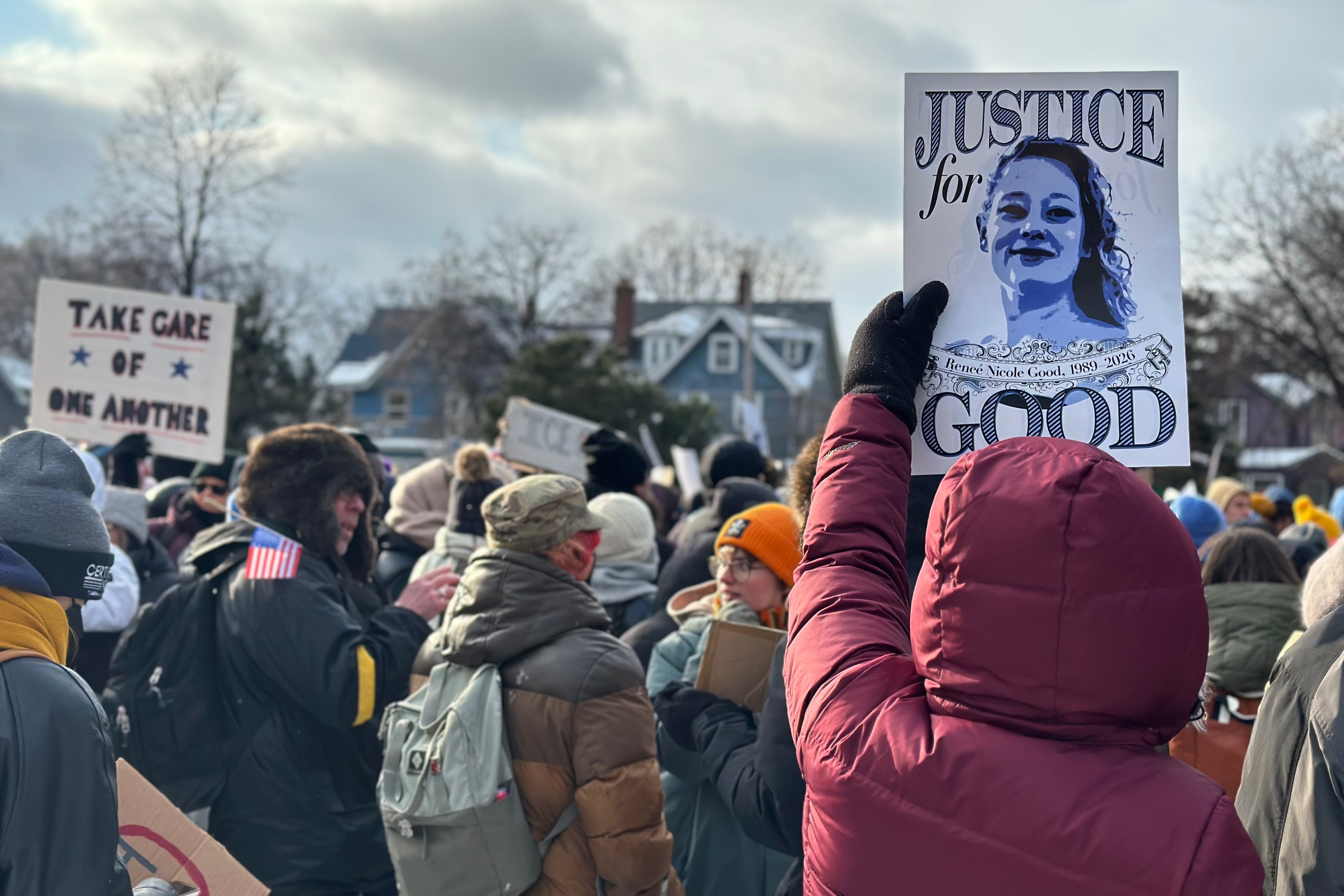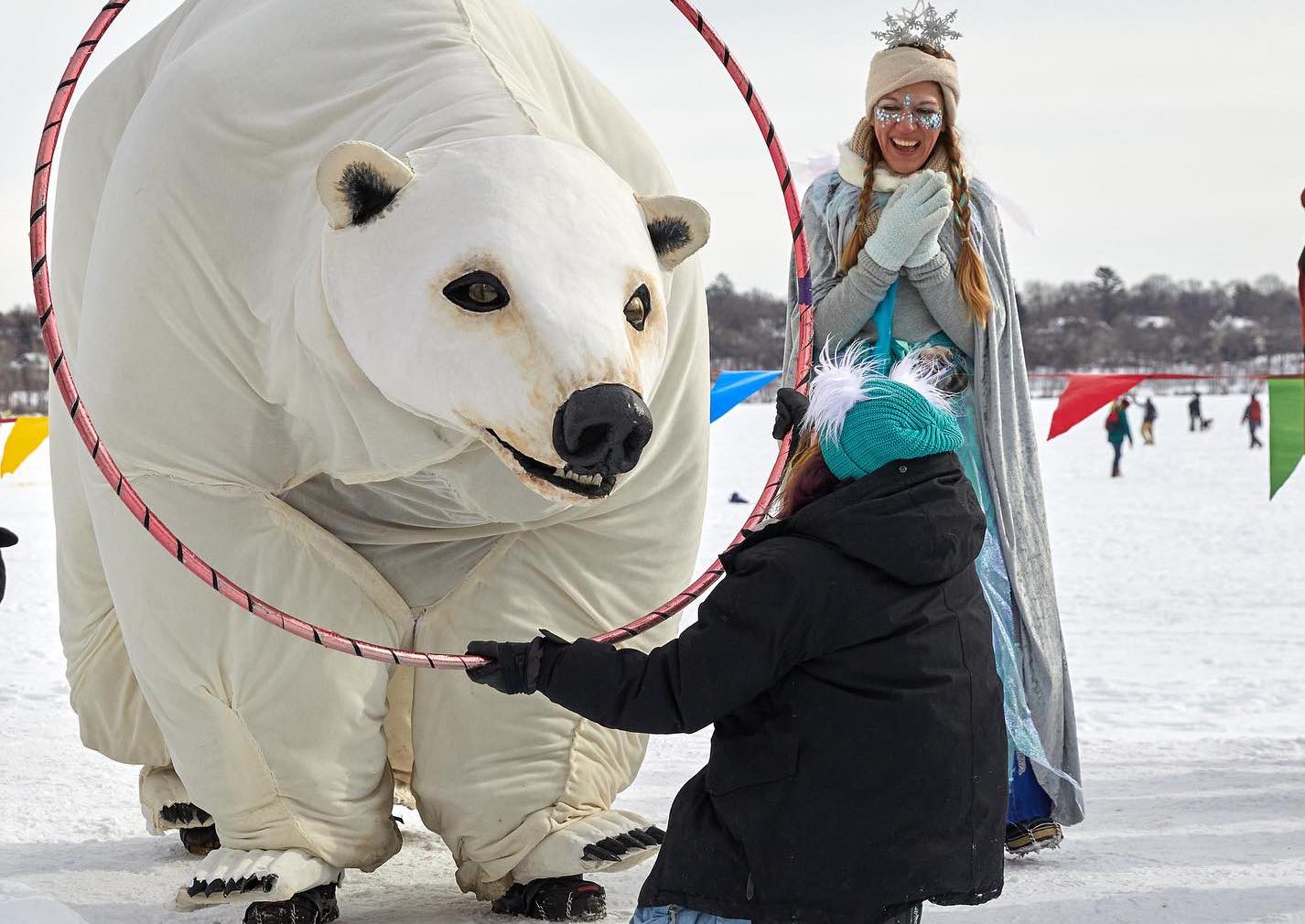One dancer enters the center of the circle at a time, surrounded by their dance community and friends, everyone seeming to move with them, invested in each movement. The dancers express themselves through hard-hitting jabs and releases, each with their own unique style. The cheers of support and collective engagement create palpable hype, pushing the session into a vulnerable, creative, and welcoming place. This is krump.
“The thing that drew me to krump seems to be a common thing for people to say, it’s the aspect of support, or what we call ‘hype,’” explains Mia Johnson, aka “Girl Kaution.” “I had never experienced that much energy being put into supporting whoever’s dancing.”
“It’s performative and theatrical,” says Cecil Neal, aka “Final Warning.” “It’s a safe space for a lot of people.”
Or as Herb Johnson, aka “Fair Warning” a pioneer of the style, puts it simply: “Krump is an expressive dance style that highlights character and emotions.”
Krump emerged from South Central L.A. in the late ’90s, growing out of a dance style called clowning, but with less of a focus on entertainment. (The name itself is an acronym for “Kingdom Radically Uplifted Mighty Praise.”)
“They were in a community that experienced a lot of trauma and violence," Mia says. "They wanted a form that was more accessible to express all of those experiences, not just joy or entertainment.”
Rize, the 2005 David LaChapelle documentary, played a large role in popularizing the style with dancers nationwide, included those who laid the foundation for a krump community here in Minnesota. Herb began krumping in high school, and he says the local scene started to grow around 2013.
“I was inspired by my peers,” he explains. “At first we were all separated, not knowing the others existed. We started to naturally find others who aligned with the same dance style.”
The community kept expanding, and growth required teaching. Herb taught krump at the St. Paul Conservatory for Performing Arts from 2013-2017, where he was first connected with Neal and Mia. He also taught a krump class at the University of Minnesota in 2016, a role he has since passed on to Neal.
“Minnesota is actually very well known for dance, breaking especially, starting around 2010,” Herb explains. “The issue was that not everyone had the ability to do the magnificent things that breakers can do. So then you would have other styles like popping, locking, and house. Krump is very close to the street aspect, and street culture that some of these other styles, that are now a lot more commercialized, have sort of pulled away from.”
Krump is identifiable by its technique: chest pops, arm swings, and jabs.
“We have distinct hand gestures, we like to call language. It’s about characterization and building a character,” Neal says. “It’s not just about movement, it’s about culture.”
“It’s a dance style that embraces raw movement, even ugliness," Mia says. "It’s not all about perfection or looking as cool as you can look. It’s a place to really express what's on your heart and be able to move how your body wants to move.”
Krump plays out through sessions and battles.
“Sessioning is the action of everyone gathering and dancing to music, just taking turns testing their abilities and ideas, while uplifting energy,” Herb explains.
“It’s centered around the idea that you’re giving as much energy to the person in the middle because you are trying to push them to a place energetically and emotionally that they couldn't get without the support of that community,” Mia adds, explaining that there are three types of battles. “A street battle is where you could be at a session and somebody calls you out spontaneously. A tournament battle is where you sign up, there’s a bracket, and you’re going against the larger hip-hop community. An exhibition battle is where you’re hired or booked to battle against a specific person. Almost more similar to a performance.”
The biggest battles of the year in Minnesota take place at "The Uprizing," an event that Herb put together with Ololade (aka “O”) and Tou SaiKo Lee in 2013.
“We host highly qualified artists to further knowledge," Herbs says. "We highlight those who are a part of the krump community in Minnesota and part of the larger community.”
"The Uprizing," which will take place this year at Indigenous Roots on June 10, has been partnered since 2021 with “Rooted,” an event created by local organization Maia Maiden that uplifts hip-hop in the Twin Cities. "Rooted" is open to all, a place where dancers and audience alike can connect with the wider community.
Along with the annual "Uprizing," the krump community stays active through weekly sessions held at dance studios like House of Dance, The Work Room, and Hothouse, where Simone Hall hosts a weekly womxn’s session on Thursdays.
All of the dancers interviewed expressed the importance of women to krump.
“One of the creators of the style is a woman. Here in Minneapolis there are so many examples of women who dominate the scene,” Herb says, while acknowledging the challenges of attracting women to krump. “This style could easily pass as something that is extremely masculine. So typically, it’s harder to get women involved. It can be intimidating.”
“Herb is one of the primary influences of the scene. I knew that he was always someone who would stand up for me and make sure I felt okay,” Mia says. “We have more women involved now and we are committed to keeping it that way.”
The highlight reel for the Minnesota krump community is constantly growing; local krumpers have performed with T-Pain at the Super Bowl halftime show, and at George Floyd Square. Most of all, krump is passionate, vulnerable, creative and expressive—a dance style with community at its heart. As Herb says, “Once you start dancing, one thing that everyone who krumps will realize is that you have no choice but to be your true self. There is no room for hiding.”







